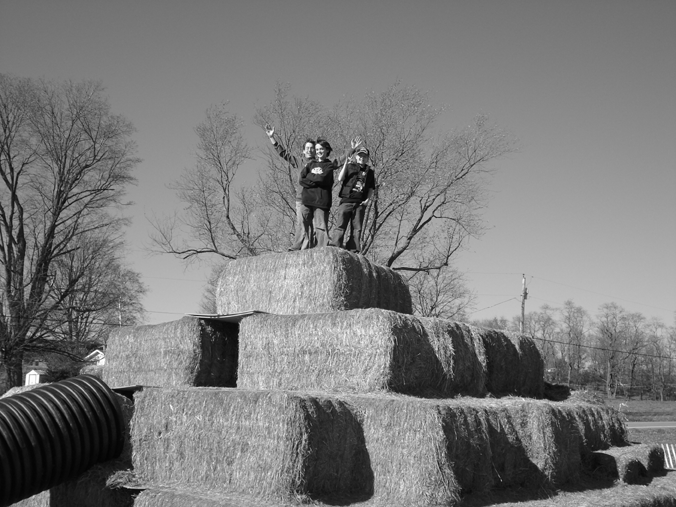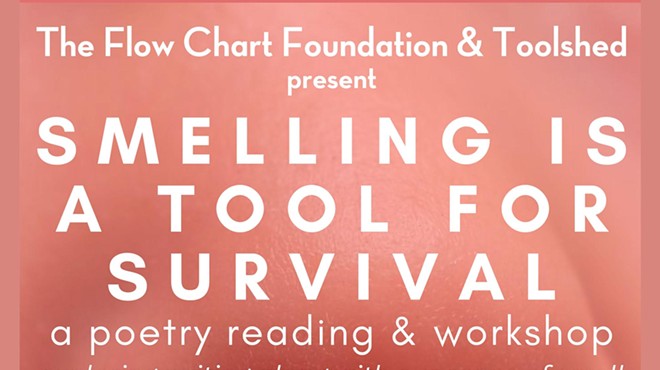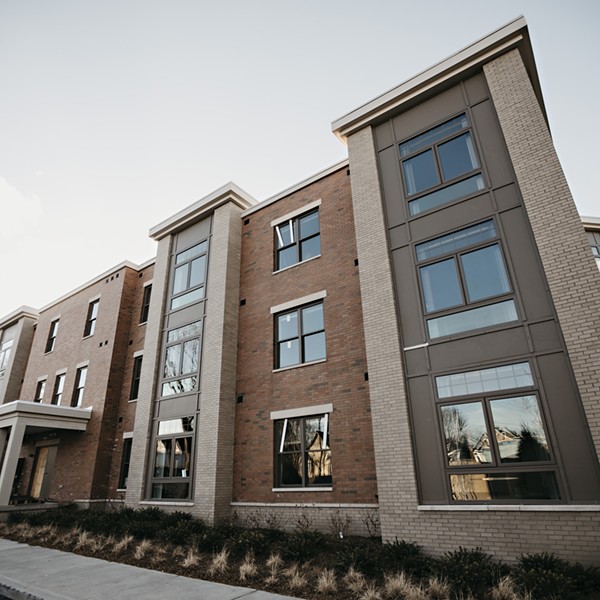
Sarah Stup refers to her disorder as “the beast.” She also calls it a gift. As a young author with autism, she devotes her time to writing and advocacy, her goal to sensitize educators, lawmakers, and anyone else who will listen to the challenges of those with disabilities such as her own. In her case, the beast is autism, and she takes us into her world with her heartfelt collection of writings titled Are Your Eyes Listening?
Autism has become a national crisis. It is the fastest-growing disability in the United States, affecting one in every 150 children. Diagnoses of autism are increasing at the startling rate of 10 to 17 percent per year. Autism is a complex developmental disability that typically appears during the first three years of life and is the result of a neurological disorder that affects the normal functioning of the brain. Individuals with autism have difficulty communicating and interacting with others, make little or no eye contact, have unusual reactions, and often seem to retreat into isolation while fixating on certain words, objects, or activities. However, autism is considered a spectrum disorder, as it affects each individual differently and at varying degrees. At best, a highly functioning person with autism may simply seem eccentric or a loner. At worst, individuals with profound autism may never speak or learn to take care of themselves. Autism falls under the umbrella term pervasive developmental disorders (PDD), sharing the title with Asperger’s syndrome, childhood disintegrative disorder (CDD), Rett’s disorder, and PDD-Not Otherwise Specified (PDD-NOS). Autism affects all races, classes, and educational levels, though it’s four times more prevalent in boys than in girls.
There is no known cure.
A decade ago, autism was considered a rare and hopeless condition. Today, through the commitment of parents, scientists, teachers, and other advocates, those with autism can be treated and assisted in improving their language and social skills and maximizing their potential. Treatments include educational and behavior training programs emphasizing language and social skills, support and counseling groups, pharmaceuticals, and other alternative therapies. For those whose lives have been touched by this disorder, the Hudson Valley is an excellent place to be, as the area is brimming with services. The Children’s Annex is a nationally recognized nonprofit center for autism support, training, and education. Each year, it serves over 250 students in New York State through two day schools in Kingston and Ellenville, and through home- and community-based programs for preschoolers as young as 18 months. The two schools serve children between the ages of two and 15, who are bussed in from more than 55 school districts. The center is also an approved evaluation site for preschool children, and evaluations are funded by the county of residence.
“When I started the Children’s Annex thirty-one years ago with Susan Buckler, the frequency of autism reported was three in five-thousand,” says program director Jamey Wolff. “There was scant awareness of autism in the media, in educational settings, or among providers of psychological and medical services. With the growing increase of autism, there is also growing awareness and support. This is an exciting time to be in the field because, finally, necessary resources and attention are being directed to this population. People with autism are as varied as snowflakes, each one a beautiful complex individual. With accurate diagnosis, early intervention, and appropriately directed support, I have seen wonderful progress and there is much hope.”
The Anderson Center for Autism in Staatsburg, previously known as the Anderson School, has shifted its focus in the past few years from a wide-ranging special education school to a facility working exclusively with autistic children and adults. “We’ve become the premiere hub within New York State for the delivery of evidence-based autism services,” says CEO Neil Pollack. “Our core strategies are applied behavioral analysis and positive behavioral supports, in an environment that provides for the most challenging children on the spectrum, twenty-four hours a day, three hundred-sixty-five days a year.”
Anderson is taking the work it’s done with children and bringing it into its adult services through a concept called Lifelong Learning, which engages autistic adults in a continual education process so they don’t slip in their skill sets. The program currently serves 52 adults in the community, with further expansion on the horizon. The center is also unfolding a new concept called the Community Support Network, a state-of-the-art linkage, referral, and information service, helping parents of autistic children navigate the services available in a given school district, and also providing advocacy. In addition, Anderson is developing services in the area of preschool, service coordination, and in-school and in-home specialty services. The Anderson hub also works with colleges and universities to place students in internships in educational psychology, behavioral sciences, special education, and international learning through an exchange program with European, South African, and South American countries.
The Ridge School, which serves students aged 10 through 19, began in New Paltz in 1990 and has since moved to Hyde Park. Its focus is on the type of autism known as Asperger’s syndrome. Definitions of Asperger’s have varied over the years—psychologists still disagree on what the definition is—but it is similar to highly functioning autism, as it shares many of the same idiosyncrasies, and it does indeed fall on the spectrum.
“There’s not much out there that’s being done for Asperger’s right now,” says program director Glenn Nystrup. “Teaching them is a great challenge, because they’re all unique and the adaptations and programming we need to make for them is also unique.” Hands-on learning is a larger part of what Ridge does, encouraging students to build things in addition to the school’s academics and frequent field trips. There is a high teacher-student ratio and the focus is on communication and interaction skills, self-reliance, and self-understanding, so students can work in restrictive settings. The Ridge School hopes to build a larger campus next year in Clinton Corners and a website will be up and running soon. One of Ridge’s students, 16-year-old Elijah Wapner, was recently followed by MTV for “True Life: I’m Autistic,” which aired on March 18. Wapner has become a professional stand-up comedian, performing weekly in Manhattan; his current routine focuses on his disability. (View clips of Wapner performing at www.MrInevitable.com.)
“[Elijah’s] act is totally hilarious,” says his mother, Valerie Paradiz, who founded the Open Center for Autism in Hurley with its executive director, Sarah Borris. Located in Kingston, it is a brand-new organization that serves teens on the spectrum and provides support to families and professionals, as well as afterschool and weekend programs and a summer camp. The two women founded the Aspie program, an educational environment for adolescents with highly functioning autism and Asperger’s, in the Onteora school district in 2000. The program lasted only three years, but it blossomed into the current Open Center and several spinoff programs. “We’re really a community center where kids on the spectrum come, feel comfortable, and invite their siblings and friends who don’t have autism,” says Borris. “We have parties regularly and plan to start a school.” Unfortunately, the Open Center may soon be forced to close its doors.
“We’re experiencing a crisis right now in funding,” says Paradiz. “It’s a tough time all around the country with fledgling programs and services. People are not only hungry for information and programs, they’re desperate for them.”
Other programs and services for those with autism include the Mental Health Association in Orange County, located in Goshen, which hosts support groups for families dealing with autism and has monthly meetings with guest speakers.
April is Autism Awareness Month. There are activities planned across the Hudson Valley this month to promote awareness, understanding, and acceptance of autism-spectrum disorders. Putnam Associated Resource Centers, the leading provider of services for children and adults with developmental disabilities in Putnam County, will host “Songs for Autism: A Concert for Children with Autism” on Friday, April 20. The concert, at the Dockside Pub in Mahopac, will feature performances by Lenore Troia, David Feder, Murali Coryell, and Bari Koral, and will benefit PARC’s preschool program for children with autism. On Sunday, April 22, from 10:30am to 12:30pm, the Open Center for Autism is hosting a benefit at Skate Time 209 in Accord.
In August, Omega Institute will be presenting “Autism Through the Life Span,” a three-day workshop for family members of people with autism and professionals, educators, and therapists, exploring the latest approaches to diagnosing, treating, and living with autism. The workshop, hosted by Valerie Paradiz, will include Temple Grandin, one of the most well known and accomplished adults with autism in the world and author of Emergence: Labeled Autistic, among its faculty.
The Hudson Valley Autism Society, in Stone Ridge, is a group of parents and service providers committed to assisting the autism community with scholarships, emergency assistance grants, donations, awards, support groups, and information. The society raises funds through its annual Walk for Autism, which takes place this year on April 29 from 10am to 2pm at the Dutchess County Fairgrounds in Rhinebeck, rain or shine. It’s now in its sixth year. “I don’t think they ever thought it would go over as big as it did,” says co-chair Sis Gonyea. “Last year, we had over three-thousand attend. To see these people from all walks of life, and so many of the children and adults with autism…it’s really a wonderful day.” In addition to the walk, which takes place on a one-mile track, there will be an information-resource tent with more than 30 booths, and a fun fair for the kids. Through pledges, walkers can help raise money for grants, scholarships, and research.
“Think of autism as living in a foreign country without knowing the language, and how difficult it would be to communicate,” says walk director Karen Kosack. “We want to raise awareness about autism so these children may live more harmoniously in society.”
Resources
Open Center for Autism www.oautism.org
Mental Health Association in Orange County www.mhaorangeny.com
Hudson Valley Autism Society www.autism-society.org
The Children’s Annex www.childrensannex.org
6th Annual Hudson Valley Walk for Autism www.walkforautism.org
Ridge School (845) 229-2087
Anderson Center for Autism www.andersonschool.org
Putnam Associated Resource Centers www.putnamarc.org
Omega Institute www.eomega.org















